 The European Space Agency launches a single Ariane 5 rocket to deliver a pair of unmanned space telescopes to the L2 LaGrange point trailing Earth. The super-cooled Herschel Space Observatory will search for objects at the far-infrared end of the spectrum, while the Planck Space Observatory will scan the microwave spectrum. Though both telescopes are sent to the same general region of space, they are entirely separate spacecraft which will operate independently of one another.
The European Space Agency launches a single Ariane 5 rocket to deliver a pair of unmanned space telescopes to the L2 LaGrange point trailing Earth. The super-cooled Herschel Space Observatory will search for objects at the far-infrared end of the spectrum, while the Planck Space Observatory will scan the microwave spectrum. Though both telescopes are sent to the same general region of space, they are entirely separate spacecraft which will operate independently of one another.

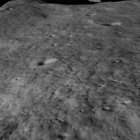 Japan’s unmanned Kaguya spacecraft, also known as SELENE, is intentionally crashed into the surface of Earth’s moon, which it has been orbiting and studying for nearly two years (twice its intended one-year operational lifetime). Having completed its observations and studies (as well as transmitting back to Earth high-definition camera views of the moon from orbit), Kaguya impacts near the crater Gill.
Japan’s unmanned Kaguya spacecraft, also known as SELENE, is intentionally crashed into the surface of Earth’s moon, which it has been orbiting and studying for nearly two years (twice its intended one-year operational lifetime). Having completed its observations and studies (as well as transmitting back to Earth high-definition camera views of the moon from orbit), Kaguya impacts near the crater Gill.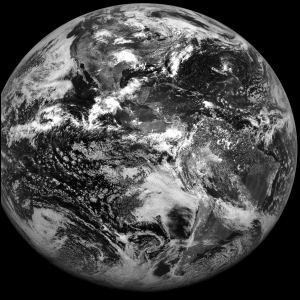 NOAA’s GOES-14 Geostationary Operational Environmental Satellite is launched from Cape Canaveral into geosynchronous orbit to monitor weather patterns over the United States. It will be held in reserve until August 2012, when it will be activated to begin monitoring Tropical Storm Isaac as it closes in on the Gulf Coast, and it will redirected to monitor Hurricane Sandy’s approach and landfall on the east coast of the United States. In 2013 it will be moved to a position near the GOES-EAST geostationary position to cover the Atlantic Ocean and the east coast during one of GOES-13’s many technical outages. It remains in orbit on standby.
NOAA’s GOES-14 Geostationary Operational Environmental Satellite is launched from Cape Canaveral into geosynchronous orbit to monitor weather patterns over the United States. It will be held in reserve until August 2012, when it will be activated to begin monitoring Tropical Storm Isaac as it closes in on the Gulf Coast, and it will redirected to monitor Hurricane Sandy’s approach and landfall on the east coast of the United States. In 2013 it will be moved to a position near the GOES-EAST geostationary position to cover the Atlantic Ocean and the east coast during one of GOES-13’s many technical outages. It remains in orbit on standby.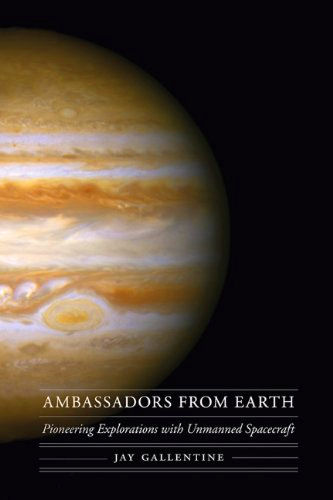 The University of Nebraska Press publishes
The University of Nebraska Press publishes  NOAA’s GOES-15 Geostationary Operational Environmental Satellite is launched from Cape Canaveral into geosynchronous orbit to monitor weather patterns over the United States. In accordance with NOAA’s policy of having standby weather satellites already in orbit before their predecessors are decommissioned, GOES-15 is held in reserve until late 2011, when it will become the primary GOES-WEST satellite. It remains in orbit on active weather-watching duty.
NOAA’s GOES-15 Geostationary Operational Environmental Satellite is launched from Cape Canaveral into geosynchronous orbit to monitor weather patterns over the United States. In accordance with NOAA’s policy of having standby weather satellites already in orbit before their predecessors are decommissioned, GOES-15 is held in reserve until late 2011, when it will become the primary GOES-WEST satellite. It remains in orbit on active weather-watching duty. NASA’s Spirit Mars rover makes its last contact with ground controllers on Earth. With the Martian winter fast approaching, and the rover’s wheels leaving it stuck in an unfavorable position to keep its solar panels angled toward the sun, Spirit gradually loses power until it shuts off, its mission having lasted nearly seven and a half years – almost 30 times its original design and mission lifespan of 90 days. Spirit’s ground controllers are reassigned to either Opportunity (which is still mobile and operating) or the upcoming Mars Science Laboratory Curiosity rover mission.
NASA’s Spirit Mars rover makes its last contact with ground controllers on Earth. With the Martian winter fast approaching, and the rover’s wheels leaving it stuck in an unfavorable position to keep its solar panels angled toward the sun, Spirit gradually loses power until it shuts off, its mission having lasted nearly seven and a half years – almost 30 times its original design and mission lifespan of 90 days. Spirit’s ground controllers are reassigned to either Opportunity (which is still mobile and operating) or the upcoming Mars Science Laboratory Curiosity rover mission.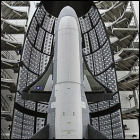 In a launch simply designated USA-212, the U.S. Air Force launches the Boeing-built X-37B unmanned vehicle into Earth orbit. Resembling a scaled-down Space Shuttle, the X-37B is launched via an Atlas V rocket, though during launch it is fully surrounded by an aerodynamic shell rather than being side-mounted to its booster like the manned Shuttle. The X-37B does not return until December, using a landing profile similar to that of the Shuttle (but automated), and the details of the mission remain classified.
In a launch simply designated USA-212, the U.S. Air Force launches the Boeing-built X-37B unmanned vehicle into Earth orbit. Resembling a scaled-down Space Shuttle, the X-37B is launched via an Atlas V rocket, though during launch it is fully surrounded by an aerodynamic shell rather than being side-mounted to its booster like the manned Shuttle. The X-37B does not return until December, using a landing profile similar to that of the Shuttle (but automated), and the details of the mission remain classified.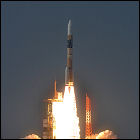 The Japanese space agency, JAXA, launches unmanned space probe AKATSUKI, known more formally as the Venus Climate Orbiter. The spacecraft is expected to reach Venus in seven months and take up orbit around that planet, where it will study Venus’ atmosphere in depth. “Akatsuki” translates to “Dawn”, but is referred to by its Japanese name to avoid confusion with NASA’s asteroid-belt-exploring Dawn spacecraft.
The Japanese space agency, JAXA, launches unmanned space probe AKATSUKI, known more formally as the Venus Climate Orbiter. The spacecraft is expected to reach Venus in seven months and take up orbit around that planet, where it will study Venus’ atmosphere in depth. “Akatsuki” translates to “Dawn”, but is referred to by its Japanese name to avoid confusion with NASA’s asteroid-belt-exploring Dawn spacecraft. Japan’s Hayabusa unmanned space probe releases a re-entry capsule containing samples of surface material it gathered from asteroid 25143 Itokawa in 2005. The capsule survives a punishing 25G re-entry and is recovered from the Australian outback, as planned, while Hayabusa itself burns up in Earth’s atmosphere. The sample payload – approximately 1500 grains averaging 10 micrometers in diameter – reveals that Itokawa has a composition virtually identical to a chondrite meteorite. A significant achievement in the history of the Japanese space program, the Hayabusa mission inspires no fewer than three movies, and a sequel of its own: the Hayabusa-2 space probe, approved in August 2010 and scheduled for launch in 2014.
Japan’s Hayabusa unmanned space probe releases a re-entry capsule containing samples of surface material it gathered from asteroid 25143 Itokawa in 2005. The capsule survives a punishing 25G re-entry and is recovered from the Australian outback, as planned, while Hayabusa itself burns up in Earth’s atmosphere. The sample payload – approximately 1500 grains averaging 10 micrometers in diameter – reveals that Itokawa has a composition virtually identical to a chondrite meteorite. A significant achievement in the history of the Japanese space program, the Hayabusa mission inspires no fewer than three movies, and a sequel of its own: the Hayabusa-2 space probe, approved in August 2010 and scheduled for launch in 2014.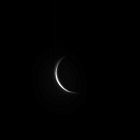 Japan’s AKATSUKI unmanned space probe fires its thrusters to slow down enough to be captured into an orbit around Venus, a maneuver which will take place mostly in the planet’s shadow, out of communication with Earth. But when ground controllers reacquire communications with AKATSUKI, it is in safe mode, and not in its predicted orbit around Venus. The main orbital engine, damaged by overheating due to salt deposits on a fuel valve, fired for less than three minutes and cannot safely be fired again, leaving AKATSUKI into a solar orbit. Mission planners put AKATSUKI into a hibernation mode to preserve it for another opportunity to orbit Venus in 2015.
Japan’s AKATSUKI unmanned space probe fires its thrusters to slow down enough to be captured into an orbit around Venus, a maneuver which will take place mostly in the planet’s shadow, out of communication with Earth. But when ground controllers reacquire communications with AKATSUKI, it is in safe mode, and not in its predicted orbit around Venus. The main orbital engine, damaged by overheating due to salt deposits on a fuel valve, fired for less than three minutes and cannot safely be fired again, leaving AKATSUKI into a solar orbit. Mission planners put AKATSUKI into a hibernation mode to preserve it for another opportunity to orbit Venus in 2015. The U.S. Air Force launches a second unmanned X-37B spacecraft into Earth orbit atop an Atlas V rocket. Designated USA-226, this is the second Boeing-built X-37B to reach orbit, and is the first to remain in orbit for over a year, re-entering the atmosphere and successfully conducting an automated landing in June 2012. This X-37B also features a solar panel array that is deployed from its cargo compartment, allowing it to generate constant power during its classified 15-month mission.
The U.S. Air Force launches a second unmanned X-37B spacecraft into Earth orbit atop an Atlas V rocket. Designated USA-226, this is the second Boeing-built X-37B to reach orbit, and is the first to remain in orbit for over a year, re-entering the atmosphere and successfully conducting an automated landing in June 2012. This X-37B also features a solar panel array that is deployed from its cargo compartment, allowing it to generate constant power during its classified 15-month mission.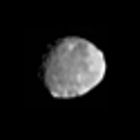 From a distance of 117,000 miles, NASA’s Dawn unmanned space probe captures the best picture yet of the asteroid Vesta, one of the two largest bodies in the solar system’s main asteroid belt between Mars and Jupiter. Launched in 2007, Dawn is scheduled to orbit and map Vesta before moving on to the asteroid belt’s largest resident, Ceres, in 2015. Mission scientists hope that the two asteroids – remnants of what may be an unformed or destroyed rocky planet beyond Mars’ orbit – will yield clues about the formation of the solar system.
From a distance of 117,000 miles, NASA’s Dawn unmanned space probe captures the best picture yet of the asteroid Vesta, one of the two largest bodies in the solar system’s main asteroid belt between Mars and Jupiter. Launched in 2007, Dawn is scheduled to orbit and map Vesta before moving on to the asteroid belt’s largest resident, Ceres, in 2015. Mission scientists hope that the two asteroids – remnants of what may be an unformed or destroyed rocky planet beyond Mars’ orbit – will yield clues about the formation of the solar system. Launched in 2007, NASA’s unmanned space probe Dawn enters orbit of Vesta, one of the largest bodies in the main asteroid belt between Mars and Jupiter. Over time, the mission plan calls for Dawn to spiral down to lower orbits to explore and map Vesta from orbit, trying to determine what secrets the large asteroid has about the earliest days of the solar system. If all goes well, Dawn will remain at Vesta until 2012, and will depart to explore another asteroid, Ceres, arriving there in 2015.
Launched in 2007, NASA’s unmanned space probe Dawn enters orbit of Vesta, one of the largest bodies in the main asteroid belt between Mars and Jupiter. Over time, the mission plan calls for Dawn to spiral down to lower orbits to explore and map Vesta from orbit, trying to determine what secrets the large asteroid has about the earliest days of the solar system. If all goes well, Dawn will remain at Vesta until 2012, and will depart to explore another asteroid, Ceres, arriving there in 2015.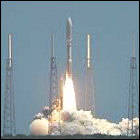 NASA launches the unmanned Juno space probe on its way to Jupiter, on a trajectory that will accelerate the vehicle through a series of maneuvers, including a gravity assist pass of Earth, en route to Jupiter. Once it arrives at the solar system’s largest planet, Juno will enter a polar orbit to monitor the planet’s clouds and magnetic field over a period of one year beginning in 2016. Juno is solar-powered, without the customary nuclear power source that has been a feature of all previous outer solar system missions. Since it will spend time within the heaviest area of Jupiter’s magnetosphere, Juno’s components are built into a hexagonal structure which acts as a heavy-duty Faraday cage to block out the radiation trapped within Jupiter’s magnetic field.
NASA launches the unmanned Juno space probe on its way to Jupiter, on a trajectory that will accelerate the vehicle through a series of maneuvers, including a gravity assist pass of Earth, en route to Jupiter. Once it arrives at the solar system’s largest planet, Juno will enter a polar orbit to monitor the planet’s clouds and magnetic field over a period of one year beginning in 2016. Juno is solar-powered, without the customary nuclear power source that has been a feature of all previous outer solar system missions. Since it will spend time within the heaviest area of Jupiter’s magnetosphere, Juno’s components are built into a hexagonal structure which acts as a heavy-duty Faraday cage to block out the radiation trapped within Jupiter’s magnetic field.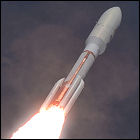 The Mars Science Laboratory mission is launched toward the red planet on an Atlas V rocket. The ambitious unmanned mission is intended to deposit a car-sized, nuclear-powered rover, nicknamed Curiosity, on the surface of Mars for an extended survey of the planet’s surface. Heavier than any of its predecessors, Curiosity will use an unprecedented means of slowing itself for descent, dangling from a “sky crane” for a soft touchdown after descending through the Martian atmosphere behind a protective heat shield.
The Mars Science Laboratory mission is launched toward the red planet on an Atlas V rocket. The ambitious unmanned mission is intended to deposit a car-sized, nuclear-powered rover, nicknamed Curiosity, on the surface of Mars for an extended survey of the planet’s surface. Heavier than any of its predecessors, Curiosity will use an unprecedented means of slowing itself for descent, dangling from a “sky crane” for a soft touchdown after descending through the Martian atmosphere behind a protective heat shield.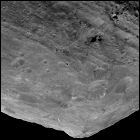 NASA’s unmanned Dawn spacecraft, having completed its high-altitude mapping of the asteroid Vesta, drops to a lower altitude for more detailed mapping of Vesta’s surface. On average, its new orbit will allow Dawn to circle Vesta at an altitude of 130 miles, down from its previous 430-mile-high altitude. Dawn is imaging Vesta stereographically, allowing for precise measurements of surface features and the asteroid’s overall shape. In 2012, Dawn is scheduled to fire its ion thruster again, breaking orbit and leaving Vesta for a three-year cruise to the largest body in the asteroid belt, Ceres, arriving in 2015.
NASA’s unmanned Dawn spacecraft, having completed its high-altitude mapping of the asteroid Vesta, drops to a lower altitude for more detailed mapping of Vesta’s surface. On average, its new orbit will allow Dawn to circle Vesta at an altitude of 130 miles, down from its previous 430-mile-high altitude. Dawn is imaging Vesta stereographically, allowing for precise measurements of surface features and the asteroid’s overall shape. In 2012, Dawn is scheduled to fire its ion thruster again, breaking orbit and leaving Vesta for a three-year cruise to the largest body in the asteroid belt, Ceres, arriving in 2015. Japanese composer
Japanese composer 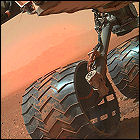 Surviving a previously untested landing method involving a rocket-firing sky crane, NASA’s Curiosity rover (or, more formally, the Mars Science Laboratory) lands safely on Mars, at the base of a mountain near Gale Crater. The first images from the surface arrive within seconds of landing, confirming the safe delivery of NASA’s latest mobile Mars explorer. The landing is especially suspenseful due to the “seven minutes of terror” – the one-way time for a signal to reach Earth from Mars – and the fact that the entire reentry and landing procedure takes 14 minutes.
Surviving a previously untested landing method involving a rocket-firing sky crane, NASA’s Curiosity rover (or, more formally, the Mars Science Laboratory) lands safely on Mars, at the base of a mountain near Gale Crater. The first images from the surface arrive within seconds of landing, confirming the safe delivery of NASA’s latest mobile Mars explorer. The landing is especially suspenseful due to the “seven minutes of terror” – the one-way time for a signal to reach Earth from Mars – and the fact that the entire reentry and landing procedure takes 14 minutes.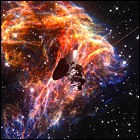 35 years after its departure from Earth, NASA’s Voyager 1 space probe registers major changes in its environment, including a large spike in radiation readings believed to indicate the presence of interstellar cosmic radiation. Some scientists claim that these changes in Voyager 1’s surroundings meet the expected criteria for space beyond the influence of Earth’s sun, making Voyager 1 the first man-made craft to reach interstellar space; others, including former Voyager project scientists, disagree with that assessment. Voyager 1 has no further planetary stops, and is expected to pass within two light years of the star Gliese 445 in 40,000 years.
35 years after its departure from Earth, NASA’s Voyager 1 space probe registers major changes in its environment, including a large spike in radiation readings believed to indicate the presence of interstellar cosmic radiation. Some scientists claim that these changes in Voyager 1’s surroundings meet the expected criteria for space beyond the influence of Earth’s sun, making Voyager 1 the first man-made craft to reach interstellar space; others, including former Voyager project scientists, disagree with that assessment. Voyager 1 has no further planetary stops, and is expected to pass within two light years of the star Gliese 445 in 40,000 years.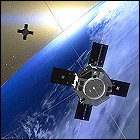 The Radiation Belt Storm Probes mission launched by NASA begins activating sensors just a few days after liftoff, weeks ahead of schedule, just in time to reveal a finding that forces a rethink of over half a century of widely-accepted science. The probes find that, in response to the recent eruption of a solar prominence, the two Van Allen radiation belts discovered in 1958 by Explorer 1 have expanded to include a third belt, which traps and repels additional solar radiation back into space. The third radiation belt dissipates after four weeks, and scientists begin rethinking their theories on Earth’s magnetosphere.
The Radiation Belt Storm Probes mission launched by NASA begins activating sensors just a few days after liftoff, weeks ahead of schedule, just in time to reveal a finding that forces a rethink of over half a century of widely-accepted science. The probes find that, in response to the recent eruption of a solar prominence, the two Van Allen radiation belts discovered in 1958 by Explorer 1 have expanded to include a third belt, which traps and repels additional solar radiation back into space. The third radiation belt dissipates after four weeks, and scientists begin rethinking their theories on Earth’s magnetosphere. NASA’s Dawn unmanned space probe fires up its ion propulsion system, breaking its orbit around the large asteroid Vesta. Having orbited and mapped Vesta since 2011, Dawn must now survive a nearly-three-year trip through the main asteroid belt to reach the largest body in that region, Ceres. Successful arrival at Ceres, planned for 2015, would make Dawn the first unmanned spacecraft to have orbited two bodies in the solar system.
NASA’s Dawn unmanned space probe fires up its ion propulsion system, breaking its orbit around the large asteroid Vesta. Having orbited and mapped Vesta since 2011, Dawn must now survive a nearly-three-year trip through the main asteroid belt to reach the largest body in that region, Ceres. Successful arrival at Ceres, planned for 2015, would make Dawn the first unmanned spacecraft to have orbited two bodies in the solar system. Making a close pass by the north pole of the planet Saturn – roughly the same distance as the average distance between Earth and its moon – NASA’s Cassini space probe captures unprecedented images of a hurricane-like storm vortex at the planet’s pole. With a diameter nearly as wide as the continental United States, the north polar vortex reveals vertical relief of various cloud features for the first time, and spins rapidly at the center of a hexagonal cloud feature nearly twice as wide as Earth itself.
Making a close pass by the north pole of the planet Saturn – roughly the same distance as the average distance between Earth and its moon – NASA’s Cassini space probe captures unprecedented images of a hurricane-like storm vortex at the planet’s pole. With a diameter nearly as wide as the continental United States, the north polar vortex reveals vertical relief of various cloud features for the first time, and spins rapidly at the center of a hexagonal cloud feature nearly twice as wide as Earth itself. Loaded into an aerodynamic shroud atop an Atlas V rocket, the U.S. Air Force launches the X-37B unmanned spacecraft into Earth orbit. Originally scheduled for an October launch, the Boeing-built X-37B resembles a scaled-down Space Shuttle. Whereas this vehicle had previously stayed in space for several months in 2010 before returning, its second flight sees it remain in orbit for nearly two years, not coming in for an automated landing until October 2014. Details of the vehicle’s mission and payload remain classified; the flight is designated USA-240.
Loaded into an aerodynamic shroud atop an Atlas V rocket, the U.S. Air Force launches the X-37B unmanned spacecraft into Earth orbit. Originally scheduled for an October launch, the Boeing-built X-37B resembles a scaled-down Space Shuttle. Whereas this vehicle had previously stayed in space for several months in 2010 before returning, its second flight sees it remain in orbit for nearly two years, not coming in for an automated landing until October 2014. Details of the vehicle’s mission and payload remain classified; the flight is designated USA-240.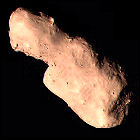 Originally launched by China to orbit the moon in 2010, and later parked at a LaGrange point beyond the moon’s orbit, the unmanned Chang’e 2 space probe flies by asteroid 4179 Toutatis at a distance of under two miles, capturing the first close-up images of the asteroid as it passes Earth almost half a million miles away. Though 4179 Toutatis has been imaged by ground-based radar on several occasions during its semi-frequent visits to the inner solar system, this is the first space probe to visit it at close range. As of this encounter, Chang’e 2 is the most distant Chinese spacecraft from Earth.
Originally launched by China to orbit the moon in 2010, and later parked at a LaGrange point beyond the moon’s orbit, the unmanned Chang’e 2 space probe flies by asteroid 4179 Toutatis at a distance of under two miles, capturing the first close-up images of the asteroid as it passes Earth almost half a million miles away. Though 4179 Toutatis has been imaged by ground-based radar on several occasions during its semi-frequent visits to the inner solar system, this is the first space probe to visit it at close range. As of this encounter, Chang’e 2 is the most distant Chinese spacecraft from Earth. NASA’s Deep Impact probe, already a veteran explorer of comets, turns its camera eye toward Comet ISON, a recently-discovered comet expected to put on a spectacular show even to the naked eye in late 2013. Originally launched in 1995 to study Comet Tempel 1 at close range, Deep Impact has since used its cameras to study other comets passing through the solar system. The distance between Deep Impact and Comet ISON at the time the 36-hour photo sequence is taken is roughly 493 million miles.
NASA’s Deep Impact probe, already a veteran explorer of comets, turns its camera eye toward Comet ISON, a recently-discovered comet expected to put on a spectacular show even to the naked eye in late 2013. Originally launched in 1995 to study Comet Tempel 1 at close range, Deep Impact has since used its cameras to study other comets passing through the solar system. The distance between Deep Impact and Comet ISON at the time the 36-hour photo sequence is taken is roughly 493 million miles. NASA announces plans to launch an experimental uncrewed test vehicle called Sunjammer into orbit in 2014, as a test of solar sail technology. Though not the first solar sail ever launched, Sunjammer be will the largest by far, its mainsail being incredibly thin Kapton with a surface area of 13,000 feet. The objective of the flight is to unfurl the sail and then use the solar wind to propel it to the L1 Earth-Sun LaGrange point nearly 2,000,000 miles from Earth. Sunjammer will be lifted into orbit by a SpaceX rocket in 2014, with both NASA and NOAA keeping a close eye on the results.
NASA announces plans to launch an experimental uncrewed test vehicle called Sunjammer into orbit in 2014, as a test of solar sail technology. Though not the first solar sail ever launched, Sunjammer be will the largest by far, its mainsail being incredibly thin Kapton with a surface area of 13,000 feet. The objective of the flight is to unfurl the sail and then use the solar wind to propel it to the L1 Earth-Sun LaGrange point nearly 2,000,000 miles from Earth. Sunjammer will be lifted into orbit by a SpaceX rocket in 2014, with both NASA and NOAA keeping a close eye on the results.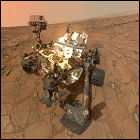 NASA/JPL’s Curiosity Mars rover unexpectedly switches to its “B-Side” backup computer after its primary onboard computer (nicknamed “A-Side”) begins to suffer memory issues. B-Side allows Curiosity to return to normal function after the A-Side issue forces the rover into a low-activity safe mode. NASA identifies the A-Side issue as a problem with its built-in flash memory.
NASA/JPL’s Curiosity Mars rover unexpectedly switches to its “B-Side” backup computer after its primary onboard computer (nicknamed “A-Side”) begins to suffer memory issues. B-Side allows Curiosity to return to normal function after the A-Side issue forces the rover into a low-activity safe mode. NASA identifies the A-Side issue as a problem with its built-in flash memory.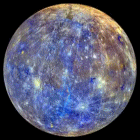 The unmanned Messenger space probe, the first spacecraft ever to orbit Mercury, completes the mapping of the tiny planet with its MDIS (Messenger Dual Imaging System), having completed full coverage of the entire planet from pole to pole in both visible and infrared light, allowing a much more accurate topographical map to be created. This represents the most complete set of mapping data available on Mercury. Messenger’s mission is slated to end in March unless it is extended a second time.
The unmanned Messenger space probe, the first spacecraft ever to orbit Mercury, completes the mapping of the tiny planet with its MDIS (Messenger Dual Imaging System), having completed full coverage of the entire planet from pole to pole in both visible and infrared light, allowing a much more accurate topographical map to be created. This represents the most complete set of mapping data available on Mercury. Messenger’s mission is slated to end in March unless it is extended a second time. To allay public fears that the next level might not be reached, NASA offers an explanation for an enigmatic 2010 image from the Hubble Space Telescope, showing a galaxy cluster, Abell 68, approximately 2,000,000,000 light years away. In the middle of that cluster, however, is what appears to be an alien from the video game Space Invaders. NASA explains that it’s a visual artifact of gravitational lensing caused by the gravity influence of the foreground galaxies upon the light of galaxies further away in the image. Earth breathes easy once more.
To allay public fears that the next level might not be reached, NASA offers an explanation for an enigmatic 2010 image from the Hubble Space Telescope, showing a galaxy cluster, Abell 68, approximately 2,000,000,000 light years away. In the middle of that cluster, however, is what appears to be an alien from the video game Space Invaders. NASA explains that it’s a visual artifact of gravitational lensing caused by the gravity influence of the foreground galaxies upon the light of galaxies further away in the image. Earth breathes easy once more.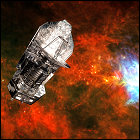 The European Space Agency officially shuts down the Herschel Space Observatory, having exhausted the unmanned orbital telescope’s remaining fuel supply with a maneuver to push it safely out of Earth’s L2 LaGrange point, opening that part of space up for future missions. Herschel’s science observations had ended when its supply of helium coolant, required to keep its instruments super-cooled to detect distant objects at the far-infrared end of the spectrum, ran out in April. Its replacement, the Gaia Space Observatory, is already being prepared for launch by ESA later in 2013.
The European Space Agency officially shuts down the Herschel Space Observatory, having exhausted the unmanned orbital telescope’s remaining fuel supply with a maneuver to push it safely out of Earth’s L2 LaGrange point, opening that part of space up for future missions. Herschel’s science observations had ended when its supply of helium coolant, required to keep its instruments super-cooled to detect distant objects at the far-infrared end of the spectrum, ran out in April. Its replacement, the Gaia Space Observatory, is already being prepared for launch by ESA later in 2013.